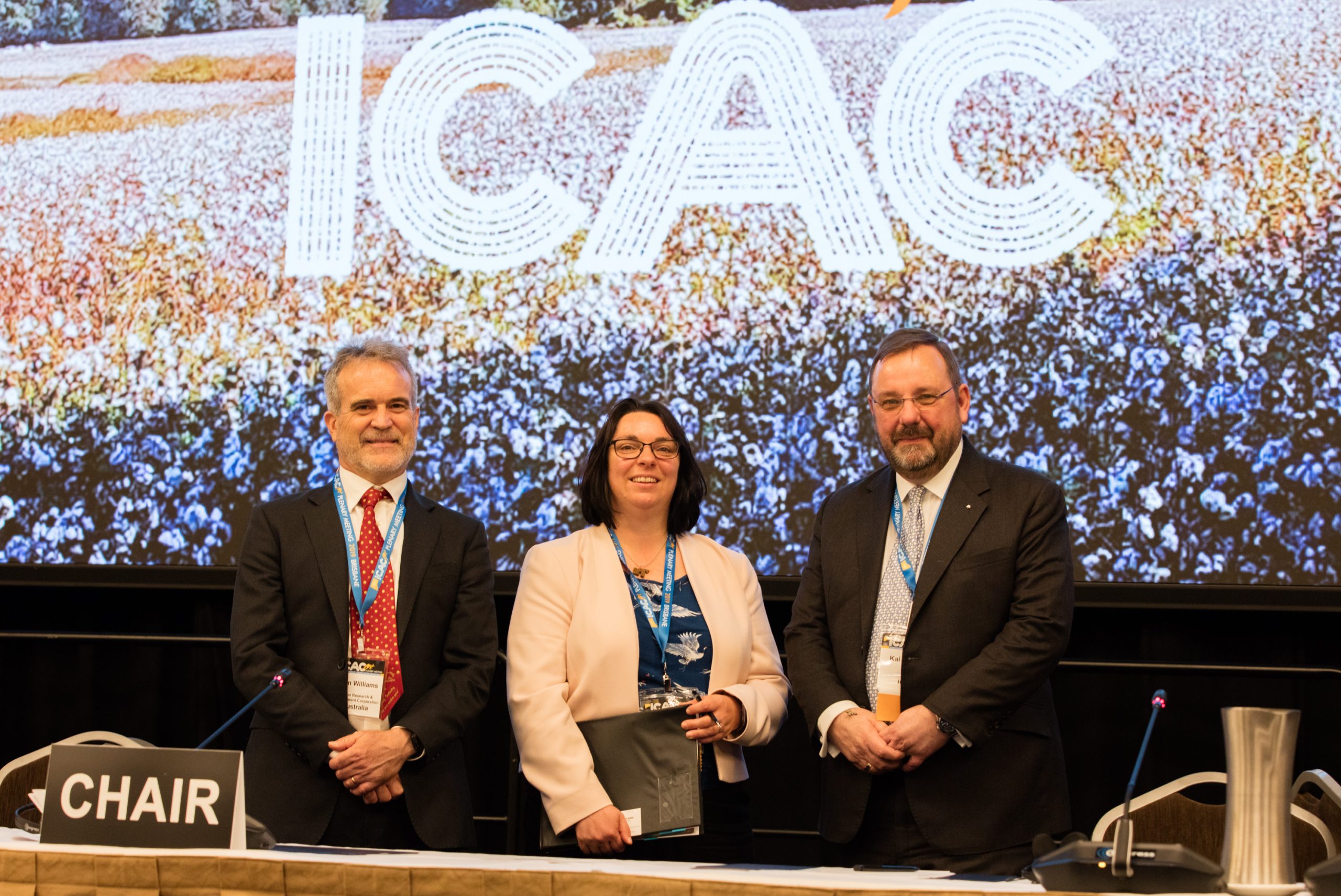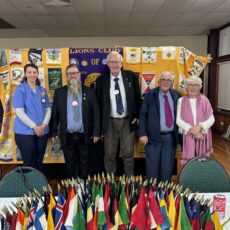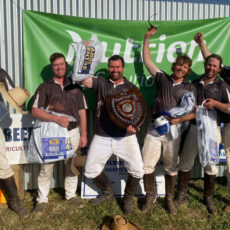Members of the Namoi Valley cotton industry recently joined representatives from around the globe at the 78th International Cotton Advisory Committee’s Plenary Meeting, held in Brisbane.
“ICAC hosts its annual plenary meeting in a different country each year, bringing together government and industry representatives from 40 cotton producing and consuming countries,” said Allan Williams, general manger R & D investment at the Cotton Research and Development Corporation in Narrabri.
“This is only the second time ICAC has been hosted by Australia; so it provided a fantastic opportunity to showcase Australia’s cotton industry to a global audience, to continue to build strong relationships with our fellow cotton producing countries and our customers.
“And to discuss some of the challenges and opportunities facing cotton worldwide.”
There were 360 delegates from 40 countries at the meeting.
“It was great to be part of an international conference where the focus was sharing knowledge,” said Ag Econ research economist Janine Powell who is based at Burren Junction.
“It was great exposure to all sorts of cotton production systems from around the world,” added Ag Econ partner and CottonInfo climate technical lead Jon Welsh who is based in Narrabri.
“Did you know the cotton seed industry in India alone employs one million people?”.
Mr Welsh gave a presentation at the conference about climate risk management, tools, tips and barriers.
“When making decisions, although we rely heavily on technology for risk management and decision making, a good understanding of basic rainfall and temperature statistics can help interpret the forecast,” said Mr Welsh.
“Most of our language is communicated around ‘average’ rain although forecast often refers to median, which can be quite a different number.
“Misinterpreting probabilities can, in part, be mitigated by decision support which embeds the likelihood of achieving yield outcomes or stored soil moisture requirements which can be far more useful.
“There is so much information out there but gains can be made by doing basic things well.”
Dr Warwick Stiller from the CSIRO was another Namoi Valley representative who was asked to speak at the conference.
Dr Stiller spoke about the success of the CSIRO’s cotton breeding program.
“CSIRO has a fully integrated research pipeline from basic research, gene discovery, through to delivery of commercial varieties through Cotton Seed Distributors.
“The CSIRO breeding program has been hugely successful over the last 30 years with continued variety improvements in yield, fibre quality and disease resistance,” said Dr Stiller.
“Around half of all industry yield increases are due to new varieties, 30 per cent to improved crop management practices and the remainder due to the interaction of variety x management – this really means that new varieties respond better to improved crop management practices than old varieties do.
“One of the keys to a successful breeding program is to work closely with industry and really understand what their requirements are.
“Breeding activities need to be carefully prioritised as it is a very expensive, long-term activity.
“If a production constraint can be overcome by changes in management practices, return on investment will be faster.
“Also you need to have realistic expectations as to what can be achieved through breeding – new varieties will not immediately solve crop production issues if changes are needed with soil and crop management.”
In his speech at the International Cotton Advisory Committee meeting Alan McClay, the head of the largest cotton sustainability program in the world the Better Cotton Initiative (BCI), heaped praise on the Australian cotton industry.
“It is exciting to be here in Australia for this event and to have the opportunity to gain a deeper understanding of the impressive Australian cotton industry from the growers that produce the crop,” said Mr McClay.
“The Australian cotton industry is pursuing a high standard for growing cotton in an environmentally and socially responsible way.
“From a global perspective, the industry is making impressive progress around high priorities like improving water use efficiency, reducing pesticide use and ensuring best practices around all facets of production are met.”
CRDC’s Allan Williams and Ruth Redfern were on the organising committee for the ICAC meeting that was hosted by the Department of Agriculture with support from CRDC, Cotton Australia and the Australian Cotton Shippers Association.
“Following the conference, CRDC, CottonInfo and CSD hosted 50 delegates from 14 countries on a tour of the Darling Downs which, despite the continued dry conditions, provided a great opportunity for our overseas guests to see Australian cotton growing in action, and to see some of our R D & E (Research, Development and Engineering) and resulting innovations and technologies – like irrigation automation sensors, in-field robotics for weed spraying, and a drone capable of releasing of beneficial insects – firsthand,” said Mr Williams.















